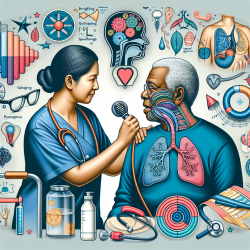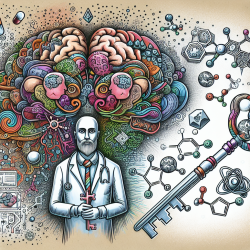As a practitioner in the field of mental health and therapy, staying informed about the latest research is crucial for improving patient care. One such groundbreaking study is "Augmented pain inhibition and higher integration of pain modulatory brain networks in women with self-injury behavior." This research provides valuable insights into the neural mechanisms behind pain insensitivity in individuals who engage in nonsuicidal self-injury (NSSI).
The Study at a Glance
The study involved 81 women aged 18-35, including 41 with NSSI and 40 healthy controls. It used a comprehensive quantitative sensory testing protocol to assess various aspects of pain processing. The findings revealed that women with NSSI exhibited more effective central down-regulation of pain compared to controls. This was assessed through conditioned pain modulation, which showed stronger pain inhibition in the NSSI group.
Key Findings and Their Implications
- Enhanced Pain Inhibition: The study found that participants with NSSI had higher heat and pressure pain thresholds, indicating more effective pain regulation. This suggests that individuals with NSSI may have an innate antinociceptive profile.
- Nociceptive Brain Responses: fMRI scans revealed increased neural activations in somatosensory brain regions among NSSI participants during painful stimuli. This suggests a stronger integration between nociceptive and pain modulatory brain regions.
- No Correlation with Clinical Characteristics: Interestingly, there were no significant correlations between pain outcomes and clinical characteristics of NSSI, such as frequency or duration of self-injury.
How Practitioners Can Apply These Insights
The findings from this study can inform both medical and behavioral treatment strategies for individuals with NSSI. Here are a few ways practitioners can apply these insights:
- Pain Profiling: Understanding an individual's pain modulation profile can help identify those at risk for developing NSSI or suicidal behaviors.
- Treatment Focus: Interventions could focus on reinstating pain as a barrier to self-injury through behavioral or pharmacological means.
- Patient Education: Educating patients about their unique pain profiles may enhance their understanding and motivation for behavioral change.
The Path Forward: Encouraging Further Research
This study opens new avenues for research into the neural mechanisms of pain modulation in individuals with NSSI. Further exploration could lead to more targeted therapies and improved outcomes for patients dealing with self-injurious behaviors.
If you're interested in delving deeper into this topic, I encourage you to read the original research paper. Augmented pain inhibition and higher integration of pain modulatory brain networks in women with self-injury behavior.










